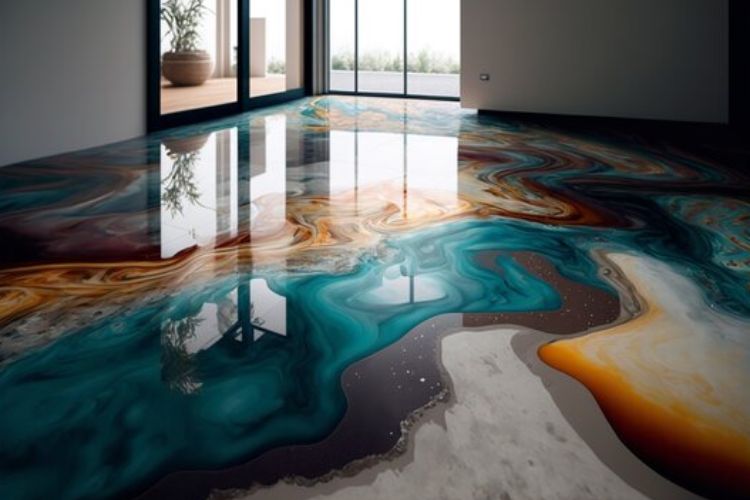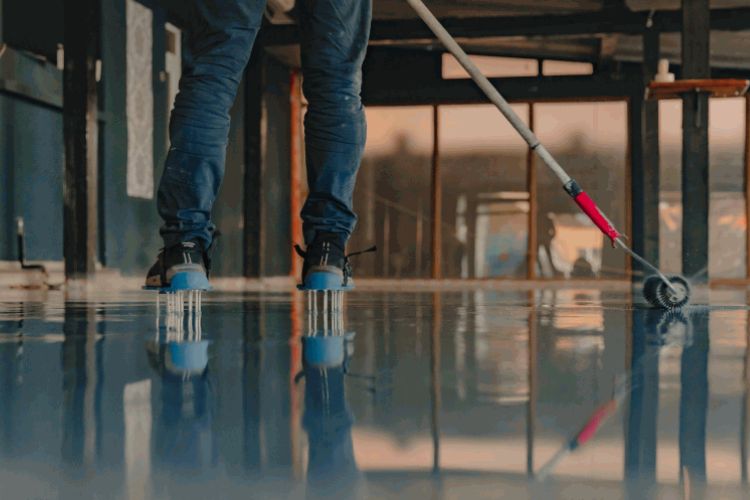Leather sofas can add elegance and sophistication to any living space, but they also require regular cleaning and maintenance to keep them looking their best.
We will explore why it is important to clean a leather sofa, the essential tools and cleaning solutions needed, and step-by-step instructions on how to effectively clean a leather sofa.
We will also discuss alternative cleaning methods and offer tips on how to maintain and protect your leather sofa for years to come.
Let's learn how to properly care for your luxurious leather furniture!
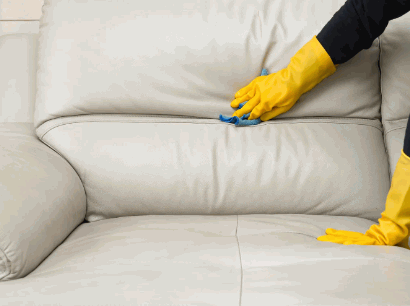
Contents
Why is it important to clean a leather sofa?
Cleaning a leather sofa is essential for maintaining its appearance, durability, and longevity. Regular cleaning helps prevent the build-up of dirt, stains, and grime that can damage the leather over time.
A well-maintained leather sofa not only looks better but also lasts longer, making it a worthwhile investment. Dirt and stains not only affect the aesthetic appeal but can also lead to the leather drying out and cracking, significantly reducing the sofa's lifespan.
Environmental factors like dust and moisture can also impact the leather's quality. By using appropriate cleaning products and techniques, you can protect the leather from these damaging elements, ensuring that your sofa remains in top condition for years to come.
Learn more: How To Clean Leather Sofas
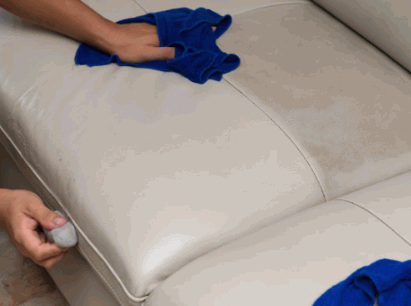
What are the essential tools for cleaning a leather sofa?
To effectively clean a leather settee, you will need specific tools including a suitable leather cleaner, a soft cloth, and a leather conditioner. These tools are essential for maintaining the settee's cleanliness and preserving its quality.
When cleaning a leather settee, it is crucial to use gentle cleaners that are specially formulated for leather to avoid causing any damage to the material. Opt for products from reputable brands such as Leather Honey or Timothy Oulton, known for their high-quality leather care solutions. A soft cloth is ideal for gently wiping away dirt and dust without scratching the leather surface. Using a leather conditioner after cleaning will help nourish the leather and keep it looking supple and lustrous for years to come.
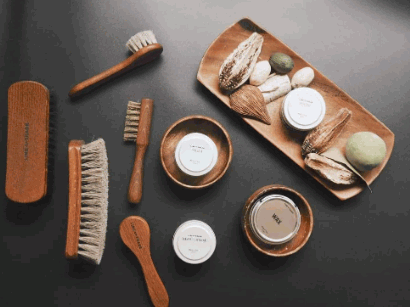
What is the best type of cloth to use?
When cleaning a leather sofa, it is recommended to use a soft, lint-free cloth that won't scratch or damage the leather surface. Microfiber or cotton cloths are ideal choices for gently wiping down the sofa without leaving residue or marks.
These materials not only help maintain the leather's appearance but also prolong its lifespan by preventing unnecessary wear and tear. Choosing the right cloth is crucial for preserving the natural texture and shine of the leather, ensuring that it stays looking luxurious for years to come.
When wiping the sofa, it's important to use a light touch and follow a circular motion. This technique not only ensures thorough cleaning but also helps distribute any cleaning product evenly if being used. By following these simple steps, you can keep your leather sofa looking its best and protect it from any unintended damage.
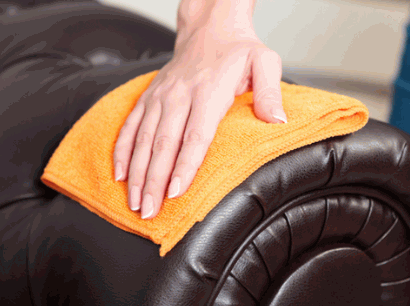
What cleaning solution should be used?
When cleaning a leather sofa, a mild solution of white vinegar and water can be effective in removing stains and dirt without damaging the leather. Mix equal parts white vinegar and water to create a gentle yet potent cleaning solution.
- Apply this mixture to a soft cloth, ensuring it is damp but not dripping wet.
- Gently dab the stained areas, working methodically to cover the entire surface.
- The acidity of white vinegar helps to break down dirt and grime, leaving your leather sofa looking refreshed and clean.
After applying the solution, use a separate clean cloth dampened with plain water to wipe away any residue. This step ensures that no vinegar remains on the leather, preventing any potential damage. Allow the sofa to air dry completely, and avoid using harsh chemicals or excessive water during the cleaning process to maintain the leather's quality.
Is a vacuum cleaner necessary?
Whilst not always necessary, a hoover can be useful for removing dust and debris from crevices and seams of a leather settee. A soft brush attachment can help gently lift dirt without causing any damage to the leather surface.
Using a hoover with the appropriate attachment can effectively suck up hidden dirt particles that accumulate in the nooks and crannies of a leather settee, ensuring a thorough cleaning process.
The soft brush attachment is crucial as it prevents scratches and scuffs on the delicate leather material, maintaining the settee's texture and appearance over time.
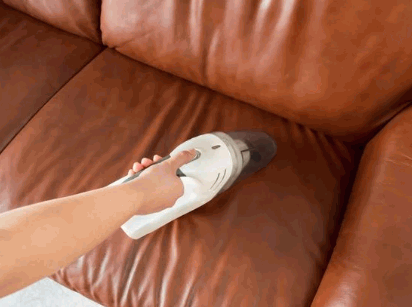
How to clean a leather sofa?
Cleaning a leather settee involves several steps to ensure thorough cleaning and maintenance. By following a systematic approach, you can effectively remove dirt, stains, and grime from the surface while preserving the leather's quality.
- Start by gently dusting the settee with a soft cloth or vacuum attachment to remove loose dirt and debris.
- Next, prepare a cleaning solution suitable for leather by mixing mild soap or leather cleaner with water. Use a clean cloth dampened with the solution to wipe down the settee in a circular motion, focusing on stains or heavily soiled areas.
After cleaning, ensure the settee is completely dry to prevent water stains. Avoid using heat sources like hairdryers; instead, let the settee air dry naturally. You can use a soft cloth to gently pat the leather to absorb excess moisture and speed up the drying process.
Step 1: Dust and vacuum the sofa
The first step in cleaning a leather sofa is to dust and vacuum the surface to remove loose dirt and debris. Use a soft brush attachment on the vacuum cleaner to gently lift dust from the crevices and seams of the sofa.
Ensure to move the brush attachment in gentle, circular motions to avoid scratching the delicate leather.
- Vacuuming helps to prep the leather for further cleaning by eliminating surface dirt.
- For tougher spots, use a damp cloth to pat the area gently before vacuuming again.
- Be careful not to apply too much pressure, as this can damage the leather's finish.
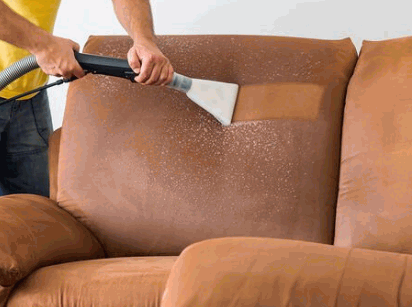
Step 2: Prepare the cleaning solution
Next, prepare a cleaning solution by mixing equal parts white vinegar and water in a spray bottle.
This gentle yet effective solution can help remove stains and dirt from the leather settee without causing any damage. The acidity of white vinegar helps break down stains and dirt, while water provides a gentle dilution to prevent the leather from drying out.
Before applying the solution, it's important to do a spot test on a small, inconspicuous area to ensure compatibility. Always blot stains instead of rubbing to avoid spreading the stain further.
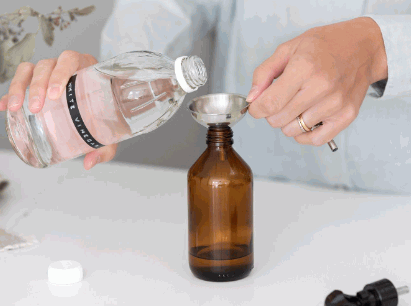
Step 3: Test the solution on a small area
Before applying the cleaning solution to the entire sofa, it's crucial to test it on a small, inconspicuous area to check for any adverse reactions. This step helps ensure that the solution is safe and effective for the leather.
When conducting a patch test, remember to choose a spot that is not easily visible, such as the back of the sofa or the underside of a cushion.
This way, any potential negative effects will not be prominently displayed on the main surface of the sofa.
Observing the test area over a period of time, typically 24 hours, is essential to see if there are any changes in colour or texture.
If the test spot shows no adverse reactions, you can proceed with confidence to clean the rest of the sofa knowing that the solution is suitable for your leather upholstery.
Step 4: Wipe down the sofa with the solution
Using a soft cloth, gently wipe down the leather sofa with the cleaning solution in a circular motion. This technique helps lift dirt and stains from the surface while being gentle on the leather.
Ensure that the cloth is damp but not soaked, as excessive moisture can damage the leather. Applying gentle pressure during the wiping process is key to removing dirt effectively without causing any harm. Remember to work in small sections, allowing the cleaning solution to penetrate the leather and break down any stubborn stains. Focusing on one area at a time ensures thorough cleaning and prevents the solution from drying out too quickly.
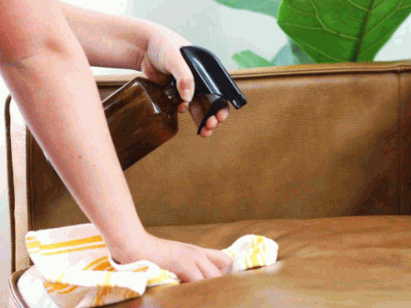
Step 5: Remove excess solution with a clean cloth
After wiping down the sofa with the cleaning solution, use a clean, damp cloth to remove any excess solution from the surface. This step helps prevent residue buildup and ensures a thorough cleaning.
To do this effectively, gently blot the cloth over the surface of the sofa, absorbing any lingering cleaning solution. Avoid rubbing vigorously, as this could potentially damage the delicate leather material. Make sure to dry the sofa completely with a soft, dry cloth after removing the excess solution. This final step will help prevent streaks and watermarks, leaving your leather sofa looking clean and well-maintained.
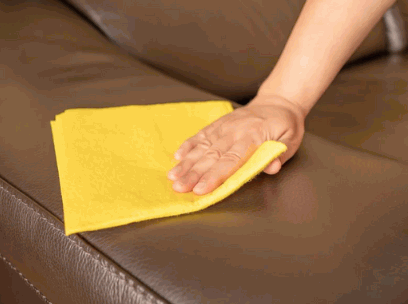
Step 6: Dry the sofa with a towel
Use a clean, dry towel to gently pat the leather settee and absorb any excess moisture. Proper drying is essential to prevent watermarks and maintain the leather's condition.
After cleaning,
- Wipe the settee with a slightly damp cloth to remove any remaining soap residue.
- Thoroughly drying the leather is crucial to avoid mould and mildew formation.
- Avoid using heat sources like hairdryers to speed up the drying process as it can damage the leather.
Remember, patience is key when it comes to drying leather properly for long-lasting beauty.
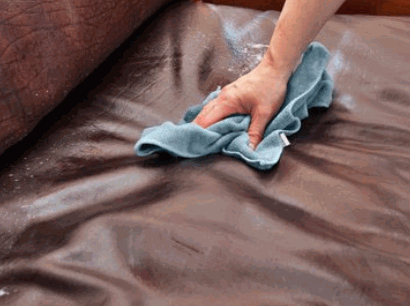
What are some alternative cleaning methods for leather sofas?
Along with conventional cleaning methods, there are alternative approaches to cleaning leather settees. Using specialised leather cleaners or homemade solutions can provide effective cleaning while catering to specific preferences or needs.
Specialised leather cleaners are formulated to gently cleanse delicate material without causing damage or discolouration. They often contain conditioning agents that help maintain the leather's natural softness and prevent drying out.
On the other hand, DIY cream-based cleaners offer a cost-effective and customisable cleaning solution. They can be tailored to address specific stains or marks, allowing for a more targeted cleaning approach.
However, homemade cleaners may lack the expert formulation of commercial products, potentially leading to inconsistent results or unintended side effects such as residue build-up.
Using a leather cleaner
Using a quality leather cleaner can be an effective way to remove stubborn stains and dirt from a leather settee. These specialised products are formulated to clean and condition the leather without causing any harm.
Commercial leather cleaners not only help in dealing with tough stains and grime but also play a crucial role in maintaining the long life and appearance of your settee. Along with stain removal, these cleaners often contain conditioning agents that keep the leather supple and prevent it from drying out and cracking over time.
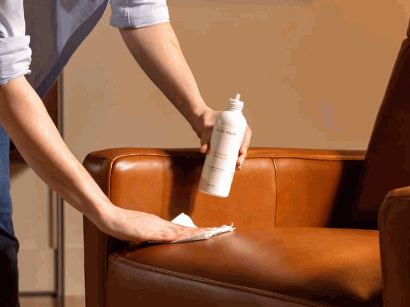
Using a homemade solution
For those preferring natural cleaning solutions, a homemade mixture of white vinegar and water can be a cost-effective and eco-friendly option for cleaning leather sofas. This DIY approach can help address common stains and dirt effectively.
Using white vinegar and water mixtures is gentle on the leather material, preventing any potential damage that harsh chemicals in commercial cleaners may cause over time. The acidic nature of vinegar helps to break down grime and grease without stripping the natural oils from the leather, maintaining its softness and durability.
Creating this homemade cleaning solution is straightforward and requires minimal effort. Simply mix equal parts of white vinegar and water in a spray bottle, shake well to combine, and lightly spray the solution onto a clean microfiber cloth.
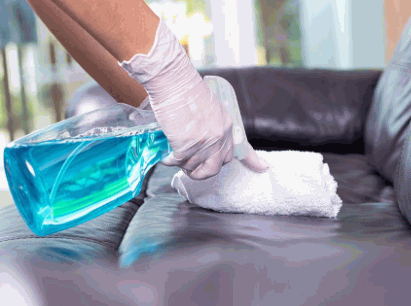
How do you maintain and protect a leather sofa?
Regular maintenance and proper protection are crucial for extending the lifespan of a leather settee. Using a leather conditioner, keeping the settee away from direct sunlight, and implementing regular cleaning routines can help preserve the leather's quality.
Investing in a high-quality leather conditioner not only nourishes the leather, keeping it supple and preventing dryness but also acts as a protective barrier against spills and stains. Regular conditioning ensures that the leather maintains its luxurious appearance and minimises the chances of cracking or fading.
Positioning the settee away from direct sunlight helps prevent discolouration and drying out of the leather, as UV rays can be detrimental to its longevity. Implementing preventive measures such as using blinds or curtains to shield the settee from prolonged sun exposure can significantly prolong its lifespan.
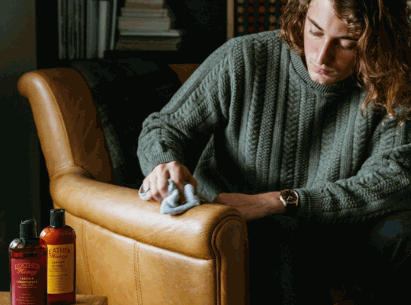
Regularly clean the sofa
To maintain a leather sofa, it is essential to establish a routine of regular dusting and vacuuming. These simple tasks help prevent dirt buildup and maintain the sofa's cleanliness and appearance.
Creating a timetable for dusting and vacuuming can be a game-changer in preserving the quality of your leather sofa. Experts recommend dusting weekly with a soft, clean cloth or a soft brush attachment on a vacuum to remove surface dust and debris gently. When vacuuming, using a low suction setting helps prevent scratching the leather. Additionally,
- avoid strong chemicals
- and choose a specialised leather cleaner or mild soapy water to tackle stains delicately.
By following these mild cleaning methods, you can keep your leather sofa looking like new for years to come.
Use a leather conditioner
Applying a high-quality leather conditioner is essential for protecting and conditioning a leather settee. These products help restore moisture, prevent drying and cracking, and maintain the leather's suppleness and lustre.
Regular use of leather conditioner can extend the lifespan of your settee by creating a protective barrier against spills, stains, and UV damage. Not only does it safeguard the leather's surface, but it also improves its resistance to wear and tear over time. Reputable brands like Leather Honey or Timothy Oulton offer specialised formulations that not only nourish the leather but also enhance its natural sheen and texture.
Keep the sofa away from direct sunlight
Direct sunlight can have damaging effects on leather settees, leading to fading, drying, and cracking of the leather surface. To prevent these issues, it is crucial to place the settee away from direct sunlight or use protective curtains or blinds.
It is advisable to rotate the settee periodically to ensure even exposure to light, preventing uneven fading.
Applying a leather conditioner regularly can help maintain the suppleness and lustre of the leather, acting as a barrier against sunlight damage.
When cleaning the settee, opt for products specifically designed for leather to avoid harsh chemicals that can further weaken the material. Another effective measure is to invest in quality covers or throws to shield the settee from prolonged exposure to sunlight, preserving its colour and longevity.




